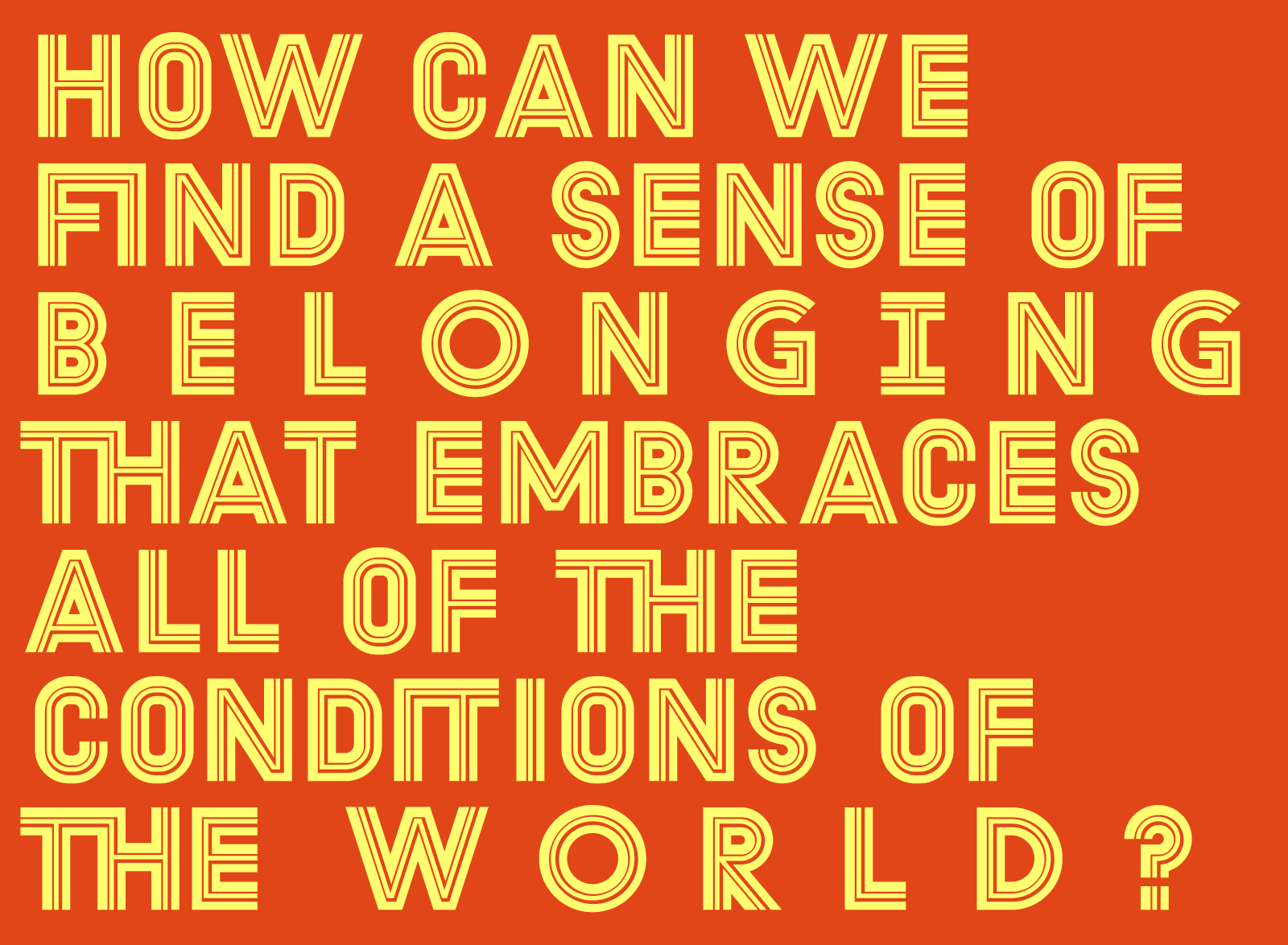Geographies of Imagination
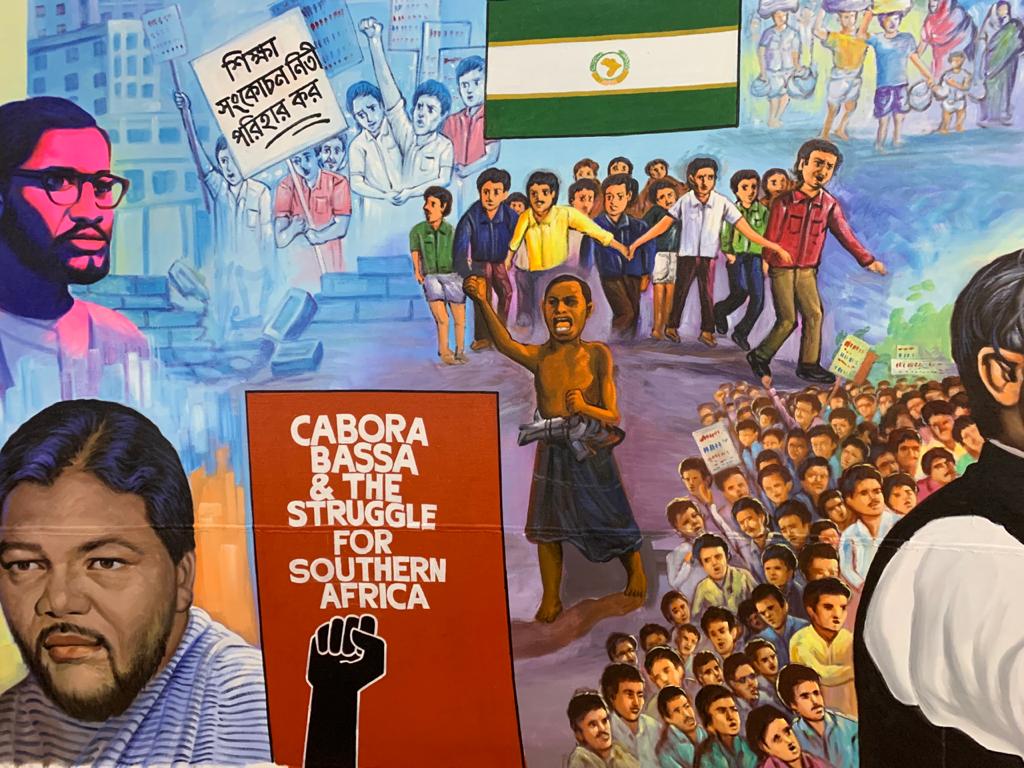
Forschungs- und Installationsprojekt 07.02.–15.02.2020
Ort Dhaka Art Summit 2020, Bangladesh
SAVVY Contemporary und das Edith-Russ-Haus laden Sie herzlich zur Berliner Prsäentation von Shirin Sabahis Monografie Pocket Folklore ein. Das Buch und die beiden Filme drehen sich um eine Skulptur der Künstlerin Noriyuki Haraguchi, die seit der Eröffnung des Teheraner Museums für Zeitgenössische Kunst im Atrium des Museums 1977 fest installiert ist. Die Skulptur mit dem Titel "Matter and Mind" ist ein Stahlbecken, das mit hochreflektierendem, wiederverwendeten Motoröl gefüllt ist. Im Laufe der Zeit wurde das Ölbecken zu einem Behältnis für Münzen und andere von den Besuchern eingeworfene Taschengegenstände und zu einem Zeugen von vier Jahrzehnten Stadt- und Museumsgeschichte. Vierzig Jahre nach seiner Gründung traf Sabahi mit Haraguchi zusammen und leitete die Restaurierung des Ölbeckens ein, was dazu führte, dass die bunt gemischten Andenken unter seiner illusionistischen Oberfläche ausgegraben wurden. Der Fokus des Projekts auf die Entstehung und Lebensdauer von "Matter and Mind" spricht davon, wie künstlerische Forschung und Kreation mit der institutionellen Geschichte einer Nation verwoben ist, die selbst im Gedächtnis der Kunstobjekte festgehalten wird.
SHIRIN SABAHI ist Künstlerin und Filmemacherin. Sie erhielt das Medienkunststipendium 2017 der Stiftung Niedersachsen im Edith-Russ-Haus. Sie hat diese Arbeiten im Edith-Russ-Haus in Oldenburg, im Centro Botín in Santander, in The Mosaic Rooms in London und im Jameel Art Center in Dubai ausgestellt. Sie lebt in Berlin, wo sie PLACES organisiert – eine nomadische Veranstaltungsreihe, bei der Redner*innen eingeladen werden, um einen Ort, imaginiert oder nicht, zu präsentieren.
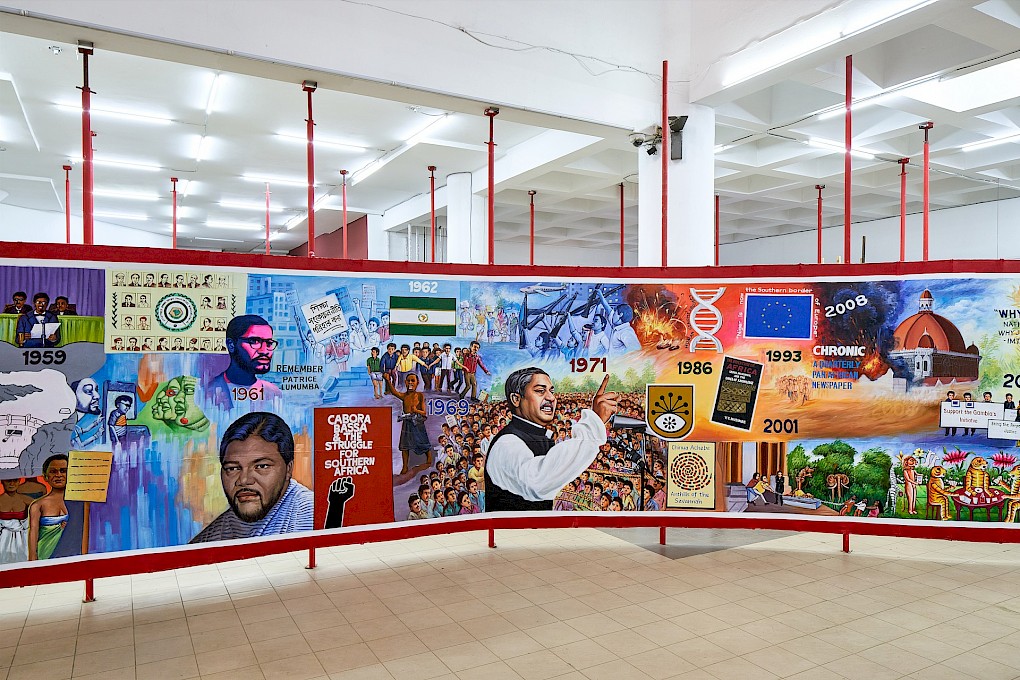
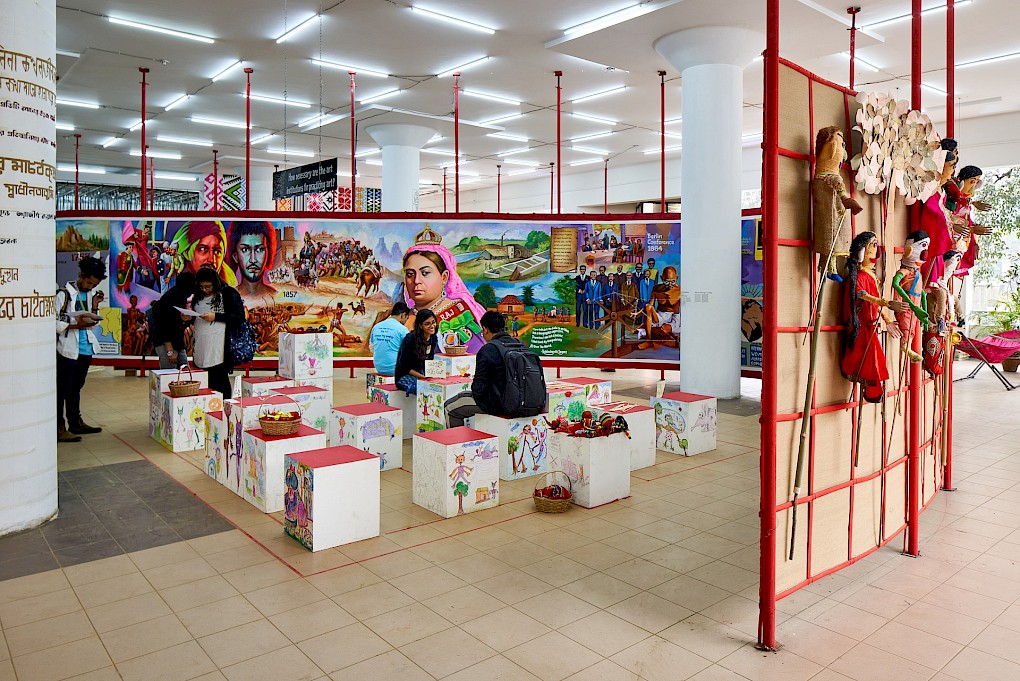
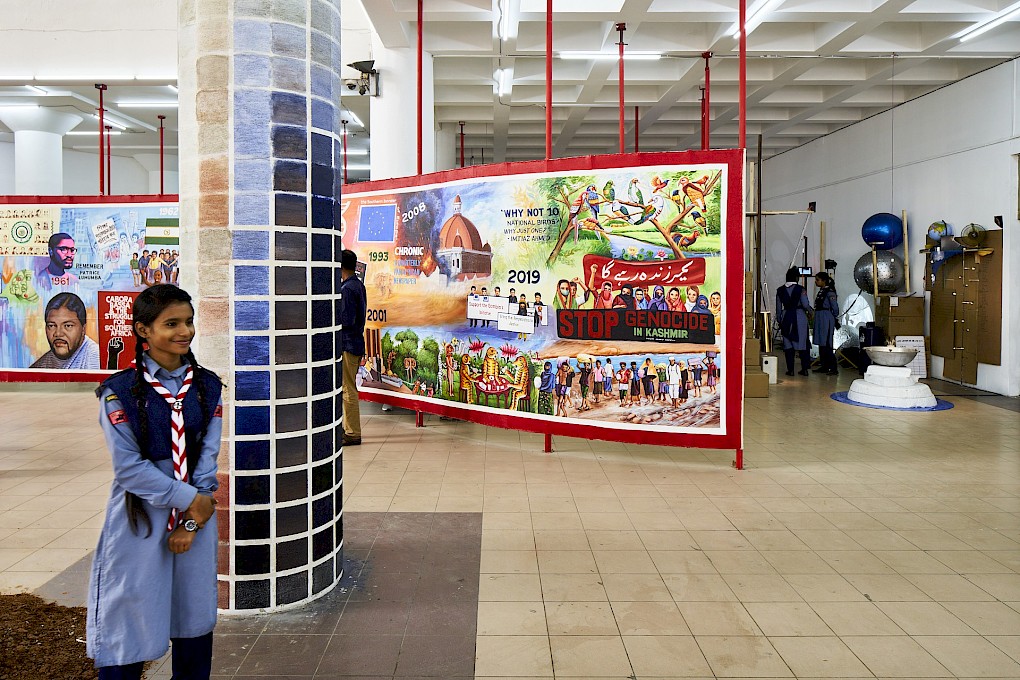
This incomplete timeline winding across the South Plaza of DAS features significant socio-political and cultural movements that pre-defined identities and nationhood, as well as rebellions and revolts against colonial rule, such as those that forged forms of resistance that planted seeds for future emancipation across different geographies. This includes how the socio-political movements on the African continent informed resistance movements in Asia and vice-versa. One such example is the Indigo revolt (ca. 1859–1862), through which Bengali farmers organised against plantation owners who severely undercut the price of indigo, thereby forcing farmers to sell their products at a price far below their own cost of production. We trace lines that move across centuries and oceans, looking for instance at the Anlu revolt (1958–1961), brought forth by Kom women in western Cameroon against the British administrative interference in agriculture (which was a female domain) and the alleged plan by the ruling political party to sell Kom land to Nigerian Igbos. The rebellion, which was crucial for the victory of the democratic party at the time of independence from colonial rule, had at its core women stripping naked in front of men as a weapon of rebellion – a practice implemented by other groups like the Takembeng.
We weave in connections between conferences and alliances that have strengthened positions of emancipation in contexts facing similar conditions of oppression. Novel forms of trans-national solidarity, from the first Pan-African conference held in London (in 1900), through the Baku Congress (1920), the Asian Relations Conference (1947), the Bandung Conference or African-Asian Conference in Indonesia (1955) and to the foundation of the Movement of the Non-Aligned that followed in Belgrade (1961–ongoing), among others. We pause on movements for independence and listen to fragments of charismatic political speeches bearing witness to new proposals and ideas with regards to justice, and sovereignty. But we also look at populistic and nationalistic speeches of more recent political leaders, at new border control monitoring systems, visa regulations, economic trades, and import and export of labour forces, that create and multiply invisible frontiers and partitions, and at how recent technological developments have facilitated novel forms of cartographic scarification and forced constructions of spaces and communities.
In a time when in Cameroon the lines of citizenship are drawn upon remnants of colonial language structures between Anglophones and Francophones, in a time when the Citizen Amendment Act and national register of citizens want to make Indian Muslims foreigners in their own country, in a time when black Africans are kicked out of South Africa in several waves of xenophobic attacks, in a time when the Rohingyas are openly persecuted in Myanmar, we must reconsider the powers that make geography be.
This iteration of Geographies of Imagination was developed through a wide range of interviews with academics and researchers from various disciplines, artists, curators, and researchers based predominantly in Dhaka in collaboration with the Samdani Art Foundation and Goethe Institut, Bangladesh. The timeline recurs with dates held in Bengali, Ethiopian and Gregorian calendars, to emphasise how the system of time itself is situated and subject to different representations and variations. The visualisation is the outcome of a close dialogue with the Dhaka based Jothashilpa collective, working with master cinema banner painter Ustad Mohammad Shoaib, artist and researcher Shawon Akand, and artists Sharmin Afroz Laboni and Alia Kamal.
Recherche Antonia Alampi, Bonaventure S.B. Ndikung, Olani Ewunnet und Shawon Akand
VISUALIsierung Jothashilpa
PRODUkTIONsMANAGEMENT Hamayet Himu
Maler Mohammad Shoaib, Didarul DipuS., M. Sumon, Abdur Rob, Mohammad Yusuf, Rafiqul Islam Shafikul, Md. Rahim Badir, Mohammad Iqbal, Mohammad Dulal, Aftab Alam, Mohammad Javed, Md. Selim
Dhaka Art Summit 2020 "Seismic Movements"
KURATORin Diana Campbell Betancourt
Kuratorische ASSISTenz Ruxmini Reckvana Q Choudhury
Rechercheassistenz Eshan Kumer Maitra and Taiara Farhana Tareque
Wir sind dankbar für die zahlreichen Unterhaltungen mit Künstler*innen, Forscher*innen, Historiker*innen, Akademiker*innen und Designer*innen in Dhaka, darunter Sadya Mizan, Yasmin Jahan Nupur, Tayeba Begum Lipi, Mahbubur Rahman, Emran Sohel, Jewel A Rob und Sanjid Mahmud, Reetu Sattar, Mustafa Zaman, Rezaur Rahman, Tanzim Wahab, Kabir Ahmed Masum, Nurur Khan, Amena Khatun, Sanjoy Chakraborty, Shayer Gofur, Nazrul Islam, Wakilur Rahman, Shishir Bhattacharjee, Huraera Jabeen, Imtiaz Ahmed, Marina Tabassum, Parsa Sanjana Sajid und Sayeed Ferdous.
Förderung Goethe-Institut Bangladesh und Samdani Art Foundation

